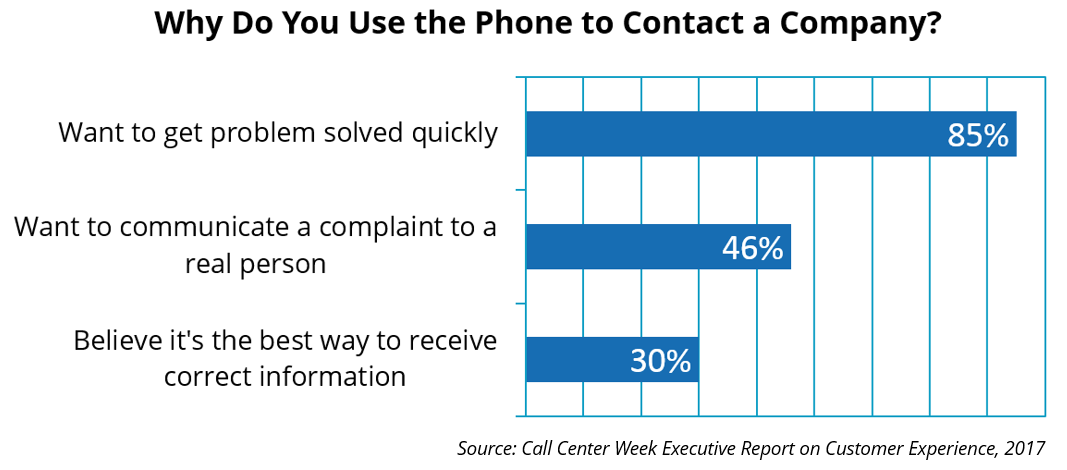43817
As a customer, you have more options than ever when you want to contact a company. Non-voice channels such as email, chat, SMS and social media have been steadily growing in popularity. It’s natural to imagine that the plain ole’ phone call is past its prime, and declining in importance.
While it’s true that the channel mix is shifting, it would be wrong to conclude that phone calls are any less essential to customer service. Let’s review some recent industry data and see why.
The Unique Power of a Voice Conversation
You can find many reports that count the percentage of “interactions” in a given channel and then draw conclusions from this data. There are a number of problems with counting “interactions” (see discussion here) but, more importantly, this data misses a key point: There is a unique quality to a live conversation with another person that is difficult to replace.
At an instinctive level, we know that a live agent conversation stands apart. When there is a tough issue to discuss or an urgent matter, or when self-service options have led to a dead-end, we want to talk to another human to cut through it all.
Be wary of surveys that ask consumers “have you tried…?” or “do you ever…?” when it comes to assessing the importance of one channel over another. That data is interesting, to be sure; but can also be misleading. When you ask specifically how consumers resolve a problem results can be quite different.
Call Center Week’s most recent Customer Experience report surveyed consumers about a wide range of service options and concluded that “Live voice remains customers’ preferred communication channel”. You can download the report here. (We featured it in our list 4 Call Center Reports Worth Your Time last month.)
Some relevant excerpts:
“Whereas voice conversations lend themselves to covering deeper issues like blame, apologies and ‘make goods’ … digital channels like live chat, mobile SMS and social media are more inherently transactional…. [and] lower-touch channels, which means they are not particularly well-suited for complicated arguments.”
“Customers, it turns out, actually prefer live voice conversations to other forms of engagement. 37% would choose phone conversations with a live agent… [followed by] email (18%), in-person (17%) and live chat (15%).”
Why Do People Call?
Given the huge popularity of messaging and social media, why do people still want to pick up the phone to call a company? The chart below is based on data from that same Call Center Week report.
ContactBabel put it well in a recent report: “Telephony [is] by far the largest inbound interaction channel. It has ubiquity, is a real-time two-way channel that is able to cover many different topics, and if queue length is reasonable, has one of the quickest speeds of response of any channel, despite popular perceptions. … [It] is in the process of reinventing itself as the channel of choice for lengthy, important or complex interactions.”
The Changing Nature of Calls
Dimension Data reports that “Phone volumes have dropped by 17% since 2015”. At first, it may seem that this is contradictory to the paragraphs above, but what’s happening is that the nature of calls being handled is changing.
As self-serve options got more effective (and more popular), easy transaction (confirming a reservation, tracking a package, etc.) shifted away from the call center. The interactions that remained were the tougher ones. Thus the calls that do end up in the call center are more complex and contentious.
So, yes, there are fewer calls. But they are, on average, longer. This probably explains, in part, why the number of call center agents continues to grow.
The Bottom Line
Everyone wants to solve the “multi-channel” puzzle: Which channels of company-consumer communication are important and where should companies invest their time and energy? That’s THE question in our industry. As you can above, the case is strong that the phone channel remains essential to an effective customer service operation.
What should companies do to maintain the quality of that channel, while keeping up in this multi-channel era? The best advice is to build a habit of watching your customers, competitors and leading companies for new communication channels, assessing the fit with your business, and constantly experimenting to see what work.

Discover the Contact Center Trends That Matter in 2024
Dig into industry trends and discover the changes that matter to your business in the year ahead.
